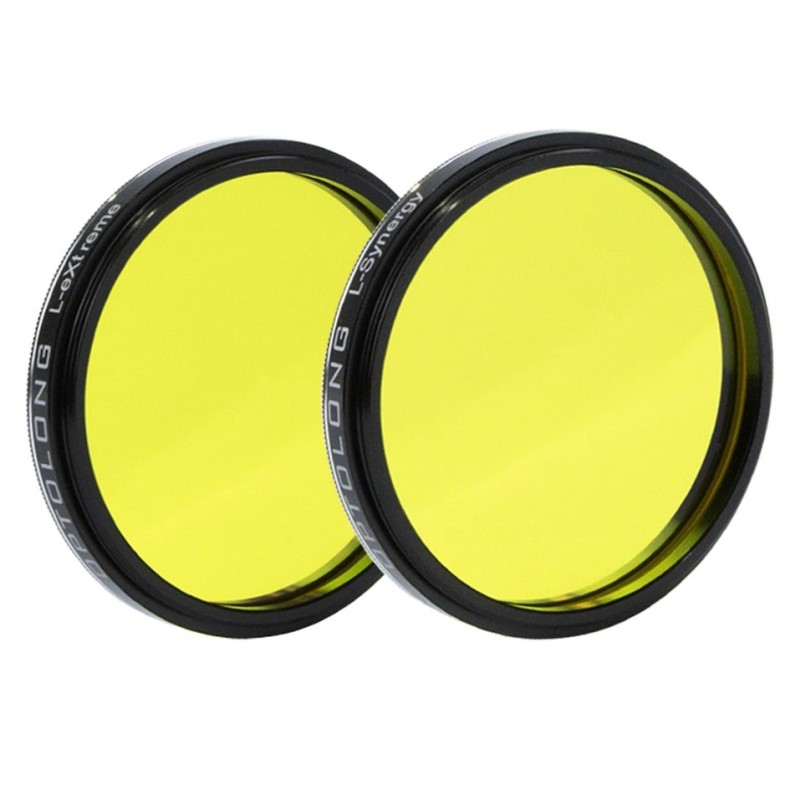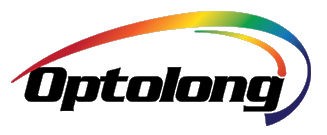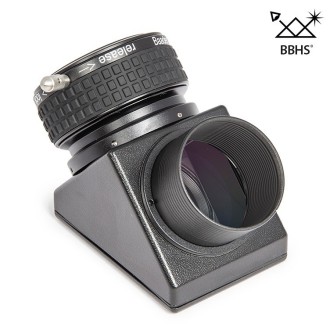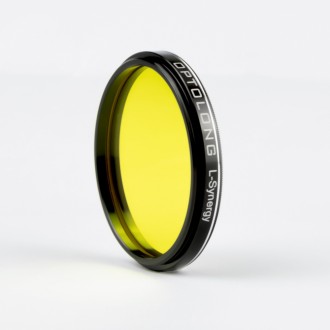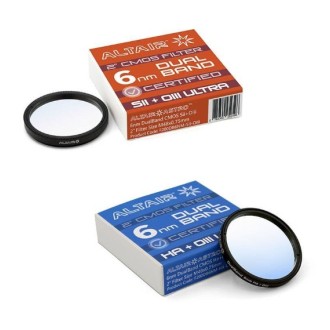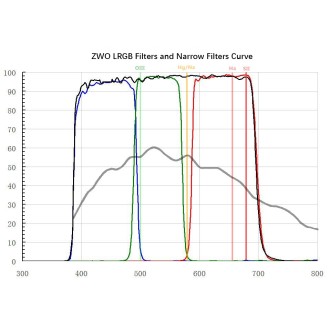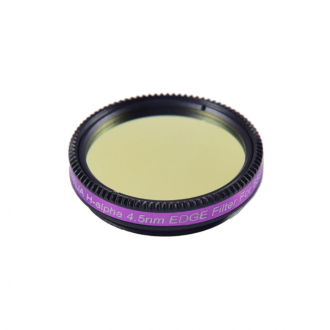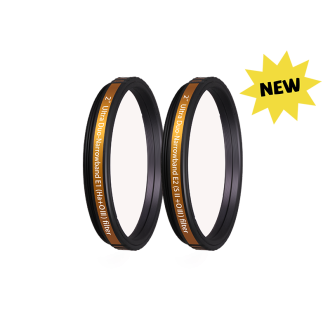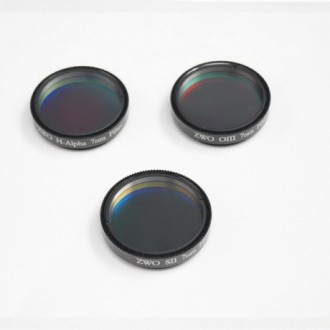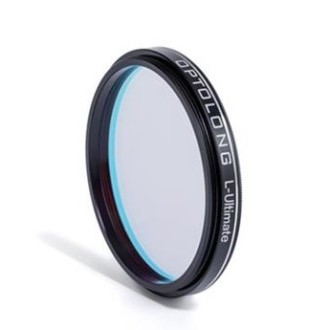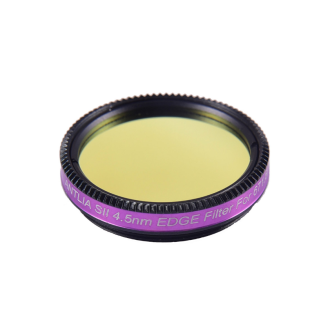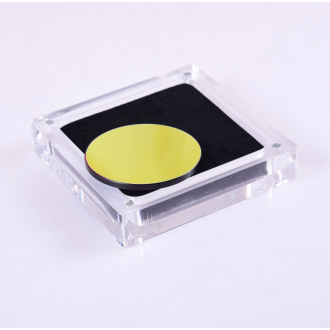Deliver it 8/16 days

OPTOLONG L2-DUAL (L-eXtreme+L-Synergy) filter combo set in 2"
Set of filters Optolong L2 Dual-Combo (L-eXtreme + L-Synergy) in 2" format. Ideal for astrophotography with color cameras, it allows to capture images in Hubble palette (SHO) without the need of a monochrome camera. High transmission, halo suppression and compatibility with fast telescopes as low as f/3.3.
| Carrier | Description | Estimated Delivery | ||
|---|---|---|---|---|
 |
Home delivery - International | Home delivery - International |
Monday, 1er December - Tuesday, 9 December |
|

Home delivery - International
Home delivery - International
Estimated delivery:
Monday, 1er December - Tuesday, 9 December
OPTOLONG L2-DUAL (L-eXtreme+L-Synergy) filter combo set in 2"
The Optolong L2 Dual-Combo Set brings together two of the most innovative filters for deep sky astrophotography with color cameras: the L-eXtreme (OIII + Hα) and the L-Synergy (OIII + SII). This combination offers astrophotographers the possibility of creating spectacular images in hubble (SHO) vane without the need to use a monochrome camera or purchase an expensive set of three separate filters.
Contents of the set
-
L-eXtreme Filter (2")Dual-narrowband filter with a bandpass of 7 nm in OIII (500.7 nm) y Hα (656.3 nm). Effectively blocks light pollution and reduces halos on bright stars.
-
L-Synergy Filter (2")Dual-narrowband filter with a bandpass of 7 nm in OIII (500.7 nm) y IBS (672.4 nm), with high out-of-band rejection and transmission >85%.
Main advantages
-
Astrophotography on Hubble palette with color camerasHα, OIII and SII channels are combined to generate high quality SHO images.
-
Compatible with fast telescopes: works in optical systems from f/3.3 onwards.
-
Maximum transmission and halo suppression thanks to years of optical refinement.
-
Greater creative flexibilityCaptures details of nebulae and reproduces deep colors of the sky.
-
Cost savings and simplicity versus traditional monochrome equipment and SHO filter sets.
Technical specifications
-
Size: 2" (M48×0.75).
-
Substrate: optical glass.
-
Thickness: 1.85 mm.
-
Bandpass (FWHM): OIII 7 nm, Hα 7 nm, SII 7 nm.
-
Transmittance: Tp > 85%.
-
Blocking: 300-1050 nm.
-
Surface flatness: λ/4.
-
Surface quality: 60/40.
-
Parallelism: 30".
Presentation
-
PP protective case with PP interior High pressure EVA.
-
Outer gift box.
The Optolong L2 Dual-Combo Set is the ideal solution for those who want to take their nebula astrophotography to the next level from urban or suburban skies, without technical complications and with results comparable to high-end monochrome equipment.
What is the L2 Dual-Combo Set?
The L2 Dual-Combo Set includes two high-end filters: a L-eXtreme and a L-Synergy.
L-eXtreme: The L-eXtreme is a dual narrowband (OIII-7nm & Ha-7nm) filter designed to exclusively transmit the main OIII (500.7 nm) and Hα (656.3 nm) nebula emission lines. By effectively blocking all other light pollution emission lines, it ensures that only OIII and Hα element signals are captured during imaging, achieving maximum effective transmission. With years of technological refinement, it significantly optimizes bright star halo suppression performance.
L-Synergy: The L-Synergy is a dual narrowband filter (OIII-7nm & SII-7nm) that ensures high transmission for both SII (672.4 nm) and OIII (500.7 nm) spectral lines, while providing exceptional out-of-band rejection for all other wavelengths. By effectively blocking all other light pollution emission lines, it ensures that only signals from OIII and SII elements are captured during imaging, achieving maximum effective transmission. With years of technological refinement, it significantly optimizes bright star halo suppression performance.
1. why the L2 Dual-Combo Set?
The L2 Dual-Combo Set is designed to unlock the potential of Hubble Palette imaging for color camera users, being compatible with telescope systems as fast as F3.3 and above (slower systems).
Tailored specifically for astrophotographers with color cameras, this set includes two high-end filters: OIII & Hα (L-eXtreme) y OIII & IBS (L-Synergy).
This innovative combination breaks through the traditional limitations of narrowband imaging with color cameras. Without the need to switch to a monochrome camera or invest in an expensive set of three SHO filters, users can obtain stunning Hubble Palette images at a fraction of the cost and complexity.
The main appeal of this combined design lies in lowering barriers and expanding possibilities for color camera users: it preserves the equipment advantages of color cameras while unlocking "Hubble-style" creative capabilities at minimal cost through a minimalist filter combination. At the same time, it offers greater flexibility for astrophotography.
Whether capturing nebula detail or reproducing the colors of the deep sky, this combination allows for richer creative expression, truly unlocking the full potential of color cameras in deep sky photography.
2. Optical design
Based on the characteristics of the celestial emission lines and light pollution emission lines, the L2 Dual-Combo Set preserves the distinctive colors of nebulae in OIII, Hα and SII while filtering out the vast majority of light pollution. Specifically designed and optically optimized, its transmission profile is as follows:


3. Coating technology
- Multi-layer anti-reflective coating
- Cementless optical substrate coating
- The filter Optolong adopts precision coating based on ion-assisted deposition technology for durability and scratch resistance, as well as center wavelength stability (CWL) without deviation caused by temperature change.
- The planetary rotation system offers precision and homogeneity in the coatings, ensuring a high value in passband transmission and out-of-band optical density.
5. Packaging style of L2 Dual-Combo Set
Outer box: gift box packaging
Plastic box: pP material
Lining: imported high pressure black EVA material

6. Performance of the L2 Dual-Combo Set
I. NGC 7000 in SHO © Ronald Brecher
NGC 7000 (also called the North American Nebula) dominates the left side of this image, and NGC 5070 (the Pelican Nebula) is on the right. These gas clouds are part of a huge complex of emission nebulae located about 1,600 light-years away in the northern Swan. With an apparent magnitude (brightness) of 4, in theory this object is visible to the naked eye, although its light is very extended. I have seen it with the naked eye and low magnification binoculars in dark skies north of where I live. It looks like a faint, diffuse, irregularly shaped gray blob.
I have previously photographed this region in large field and with higher resolution. For example, you can find images of the Cygnus Wall (the "Central America" region) and the Pelican Nebula.
All but one of my previous images have been in natural broadband color, dominated by red hydrogen emissions. For this image I used two dual narrow-band filters Optolong designed for color cameras. The Optolong L-eXtreme transmits hydrogen and oxygen emissions, the new L-Synergy transmits sulfur and oxygen emissions. I combined the data from both filters by assigning sulfur to red, hydrogen to green, and oxygen to blue, creating the traditional Hubble Palette. As can be seen in the image, the filters worked very well. It will be available for purchase soon.
This is the first narrow-band image made with the Sky-Watcher Esprit EDX 70 mm f/7 Sky-Watcher refractor. Sky-Watcher expects to have them available for sale toward the end of 2025. Here is some preliminary information on the new Esprit EDX line.

OPTOLONG L2-DUAL (L-eXtreme+L-Synergy) filter combo set in 2"

